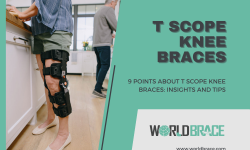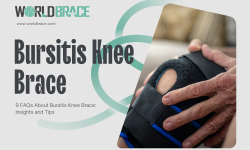The Ultimate Guide to Copper Infused Fabric
Table of Contents
Why Copper?
Copper is an essential trace element vital to all living things’ health. In humans, copper is critical to the proper functioning of organs and metabolic processes. It is safe and has been used throughout history.
Copper alloys are the first solid surface material to receive EPA registration for their anti-microbial properties, supported by extensive efficacy testing. In February 2008, the U.S. Environmental Protection Agency (EPA) had already approved the registration of 260 types of antibacterial copper alloys. By April 2011, this number had expanded to 355. This led to public health claims that copper, brass, and bronze can kill harmful and potentially deadly bacteria. Heavy metals, including gold and silver, have antibacterial effects, but the specific atomic composition of copper gives it a boost of efficacy against bacteria.
There is a free electron in copper’s outer orbital electron shell, which can easily participate in the redox reaction (making the metal a good conductor). As a result, this free electron would essentially become a “molecular oxygen grenade.” On the other hand, silver and gold have no free electrons, so they are less reactive and therefore not as powerful as copper in destroying bacteria, fungi, and viruses.
In terms of sustainability, the world’s discovered copper resources are estimated to be nearly 5.8 trillion pounds. Only about 0.7 trillion pounds (12%) have been mined in history, and almost all of them are still in circulation because the recovery rate of copper higher than any other Metal.
How Do Copper Ions Destroy Bacteria, Fungi, and Viruses?
The microdynamics effect is how copper ions can naturally destroy pathogenic microorganisms. This is a process by which copper ions pierce the outer cell wall membrane or virus shell by electrostatic force. Copper ions destroy DNA and RNA in cells and prevent their growth, making them a natural tool to protect and prevent the spread of infection.
The difference between Copper Fiber and copper-infused fabric
The demand for copper fabrics is increasing because it is believed to have antibacterial finishing agents that can help reduce the risk of infection. There are two types of copper fabrics: copper-infused fabric, and copper fiber. The former is functionalized by dip coating, while the latter is woven copper into the fabric.
Why Copper Fiber is better than Copper-Infused Fabric?
Copper fiber is superior to copper-infused fabric because it will last longer. Copper-infused fabric are not suitable for lifetime use, as a couple of wash cycles(20-30 times) will quickly reduce their effectiveness. But the price of copper fiber is expensive than copper-infused fabric.
What is a copper-infused fabric?
Copper-infused fabric is a new type of functional fabric developed from silver-infused fabric. It was first discovered that silver fiber fabrics have antibacterial and antibacterial effects. However, silver is an expensive metal, and the silver ion in textiles could not always meet the standard. Moreover, if people wear textiles containing silver ions for a long time, silver ions will slowly enter the human body and become hard to remove through metabolism.
Searching for an alternative, scientists soon discovered that copper ions could be quickly eliminated through metabolism while having superior anti-microbial performance. Therefore, the copper-infused fabric is gradually replacing the traditional silver-infused material.
Advantages of copper-infused fabric
1. Sterilization
Published studies worldwide have shown that copper can eliminate 99.9% of bacteria, fungi, and viruses within minutes of contact.
2. Deodorant
Copper can kill bacteria and fungi that usually cause bad smells and odors.
3. Safety
The body’s metabolism quickly eliminates copper ions. This is an entirely safe, chemical-free, natural, non-drug, and non-invasive solution.
4. Copper is better than silver
All forms of silver are non-selective toxic biocides-making them toxic to humans and only exhibit anti-microbial activity when wet and humid. Copper is non-toxic and suitable for all temperatures.
5. Hydrophilicity
Copper-infused hydrophilicity and the overall fabric are very soft suitable for wearing. Skin does not feel dry.
6. Promote angiogenesis
As we all know, copper can promote the development of blood vessels and rejuvenate the skin through collagen and elastin synthesis.
7. Quick dry
Amy moisture inside the copper fabric evaporates quickly. It reduces the discomfort of sweating when you exercise, thus keeping your skin dry, soft, and healthy.
Is It Toxic To Wear Copper Infused Fabric?
Copper is an essential element for life. It is necessary for the function and growth of the human body. As a metal, it is used in many household items, such as pots and pans. But when it comes to wearing copper-infused fabrics, some people worry that it may be toxic.
The World Health Organization(WHO) states that consuming 2 mg of copper per day for adults is recommended, but not more than 10 mg.
In 2013, the International Copper Association (ICA) issued a report stating that it is difficult to obtain accurate information on copper toxicity. Generally, when consumers have normal immune and endocrine systems, it will not cause serious health problems. According to ICA, it is estimated that less than 0.1% of the total population is allergic to copper. However, this does not say that people sensitive to copper should not wear copper-infused fabric.
The most important thing to remember for copper-impregnated fabrics is the dosage and sensitivity. If you are not allergic to copper, there should be no problem wearing them.
Why are the prices of copper-infused fabric different?
When comparing the price of copper fabrics, you must pay attention to the copper content, which will determine the anti-microbial effectiveness of the product. The higher the copper content, the more influential the product is in destroying bacteria, fungi, and viruses.
Does copper-infused fabric smell?
Copper-infused fabric has no smell and can also remove odor. Dr Hilary Jones had a copper sock odor challenge. Did you know that body odor is odorless? It is a bacteria that lives as part of our natural skin flora. It breaks down sweat and leads to the unpleasant smell associated with sweat. The copper ions injected into our fabrics have a self-sterilizing function, allowing your sports braces to stay fresher for longer.
Where to Buy Copper Infused Fabric sports braces?
WorldBrace is introducing a new sports braces line made of copper infused fabric and copper fiber, this has to offer and how it can help you sport better. This isn’t just any old sports support, it’s the most up-to-date technology that will help you get better exercise!
Our copper sports braces are moisture-wicking, anti-odor, and anti-microbial, as well as odor-resistant, and will keep you performing at your best. We have many collection of sports braces for men and women, including:
- Copper Back Brace
- Copper Knee Brace
- Copper Shoulder Brace
- Copper Elbow Brace
- Copper Ankle Brace
- Copper Wrist Brace
- Copper Posture Corrector
- Copper Body Shaper
Talk to our experts about the product you want to manufacture, and we’ll help you with all you need.
FAQ
Is copper harmful to your health?
Copper is essential to your health. You will die without copper. There is a process in our body called homeostasis, which balances all the body’s basic needs.
Have copper fabrics ever been known to be Antibacterial?
Copper can effectively kill a broad spectrum of viruses, bacteria, and fungi because the copper ions released from the fabric area are exposed to the outside. In the past few years, hundreds of journals have learned about the role of copper. Hundreds of medical journals from all over the world now support copper fabrics and copper coatings. Their purpose is to eradicate bacteria, viruses, and fungi within minutes.
How can copper fabric destroy the coronavirus more effectively than copper metal?
On the surface of the copper fabric, copper ions/atoms are in contact with each other. Any microbes falling on the material, the copper electron enters the schizophrenia mode, no viruses or bacteria can survive, which is equivalent to walking into a 750v fence. There is no escape.
Does the copper-infused fabric product feel rough or stiff?
In our opinion, it isn’t easy to distinguish the difference between ordinary fabrics and copper fabric. The only way to distinguish copper fabrics may be based on color. Generally, the surface of copper fabrics is copper-colored.
How do I care for copper-infused fabric products?
Our copper-infused fabric product can be maintained like any ordinary clothing. The only exception is don’t use bleach or fabric conditioners, as this will reduce the product’s effectiveness.
Have you ever reported negative reports using copper-infused fabric products?
Human skin isn’t sensitive to copper, and the risk of adverse reactions due to skin contact with copper is low. Today millions of people, including the military, NASA, and hospitals worldwide, have successfully used copper-impregnated fabrics without negative reactions.
Is copper in small amounts good for me?
A small amount of copper is an essential nutrient. Copper contributes to the formation of hemoglobin and red blood cells, and it participates in the formation of pigments in your body’s natural hair color. Copper is also involved in digestive enzymes, protein metabolism, and the healing process required for normal bone formation and maintenance. It is also necessary for RNA (ribonucleic acid) in all cells. Without copper, your body cannot make new cells. It’s also involved in the formation of elastin, healthy and young skin, and the main component of elastic muscle fibers throughout the body. Your body needs copper.
How do I know that the copper-infused fabric technology is safe?
Copper is an essential mineral in our daily diet and drinking water. It is an absolute requirement for our body. A trace amount of copper is absorbed from the fabric through the skin and is easily utilized and metabolized by the body.
What is the difference between copper-infused fabric and silver-infused fabric?
Copper is an essential mineral for the normal function of the human body. Unlike silver, copper is absorbed and utilized by the body when taken orally or absorbed through skin tissues. Compared with silver, copper has a wider range of effectiveness. Copper has skin-enhancing properties that silver does not.
The IUD (Internal Contraceptive Device) is mainly 100% pure copper. The intrauterine contraceptive device has recently obtained a 10-year license. For internal safe use, silver does not have it.
Why can't I wash the copper-infused fabric with hot water?
If you wash copper-infused fabric with hot water, the material may shrink.
How Should You Deal With Stains On Copper-Infused Fabric?
1. Do not use bleach—Pretreat stains with liquid detergent.
2. Scrub the stain vertically with a brush
3. Apply some white vinegar on the stain until as much as possible is removed
4. Wash multiple times according to the severity of the stain



